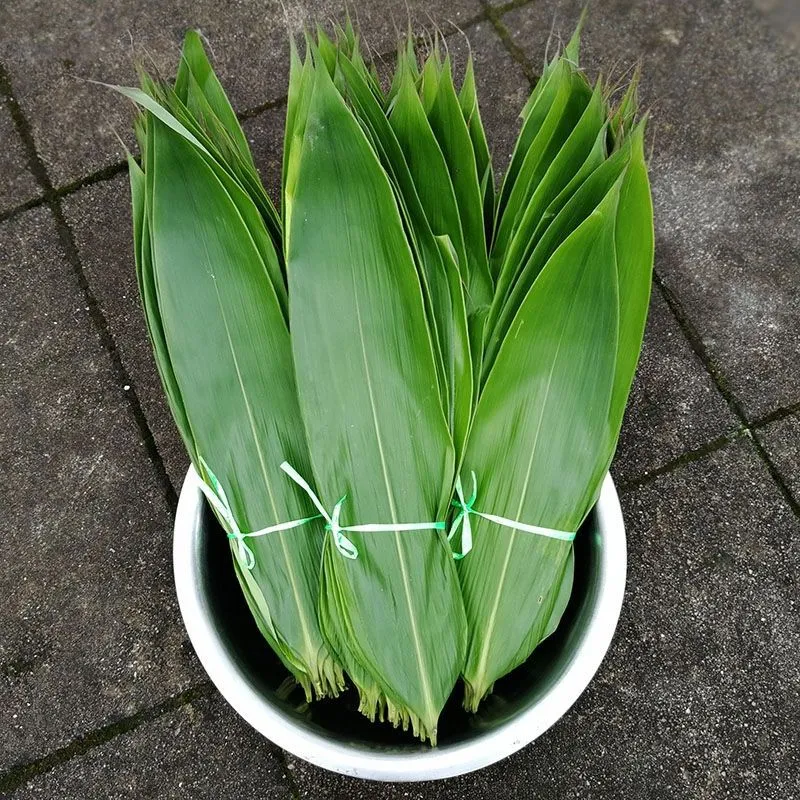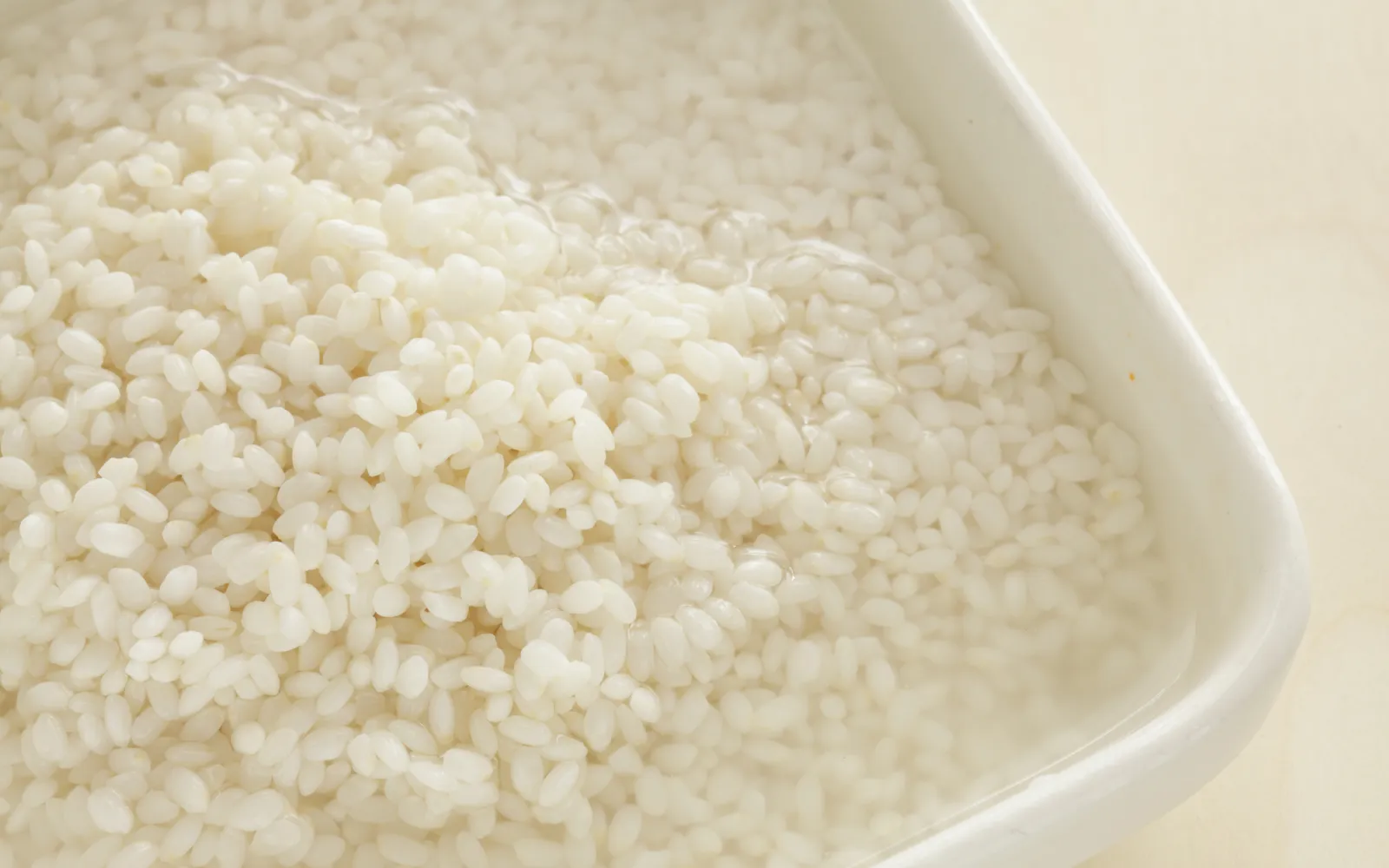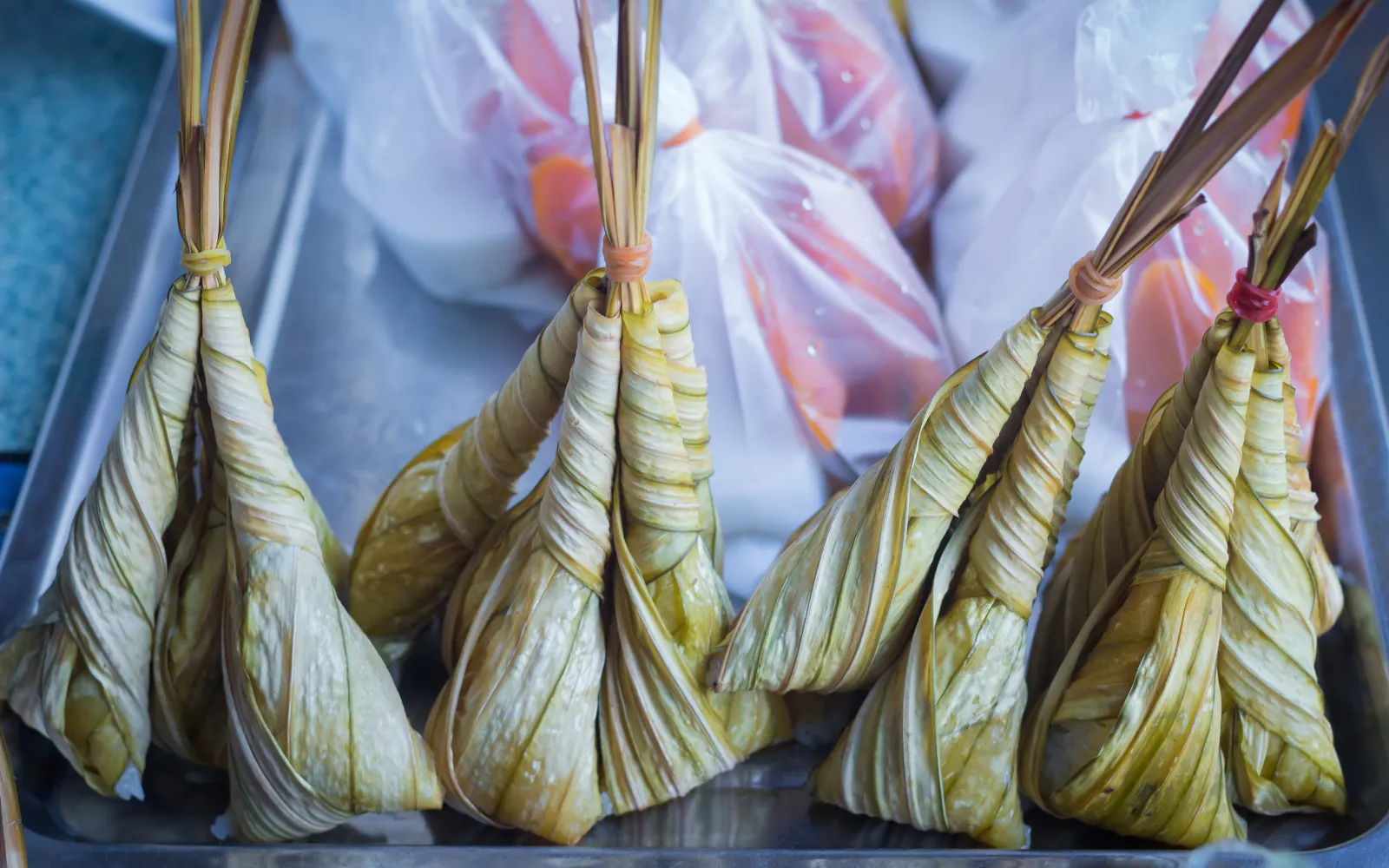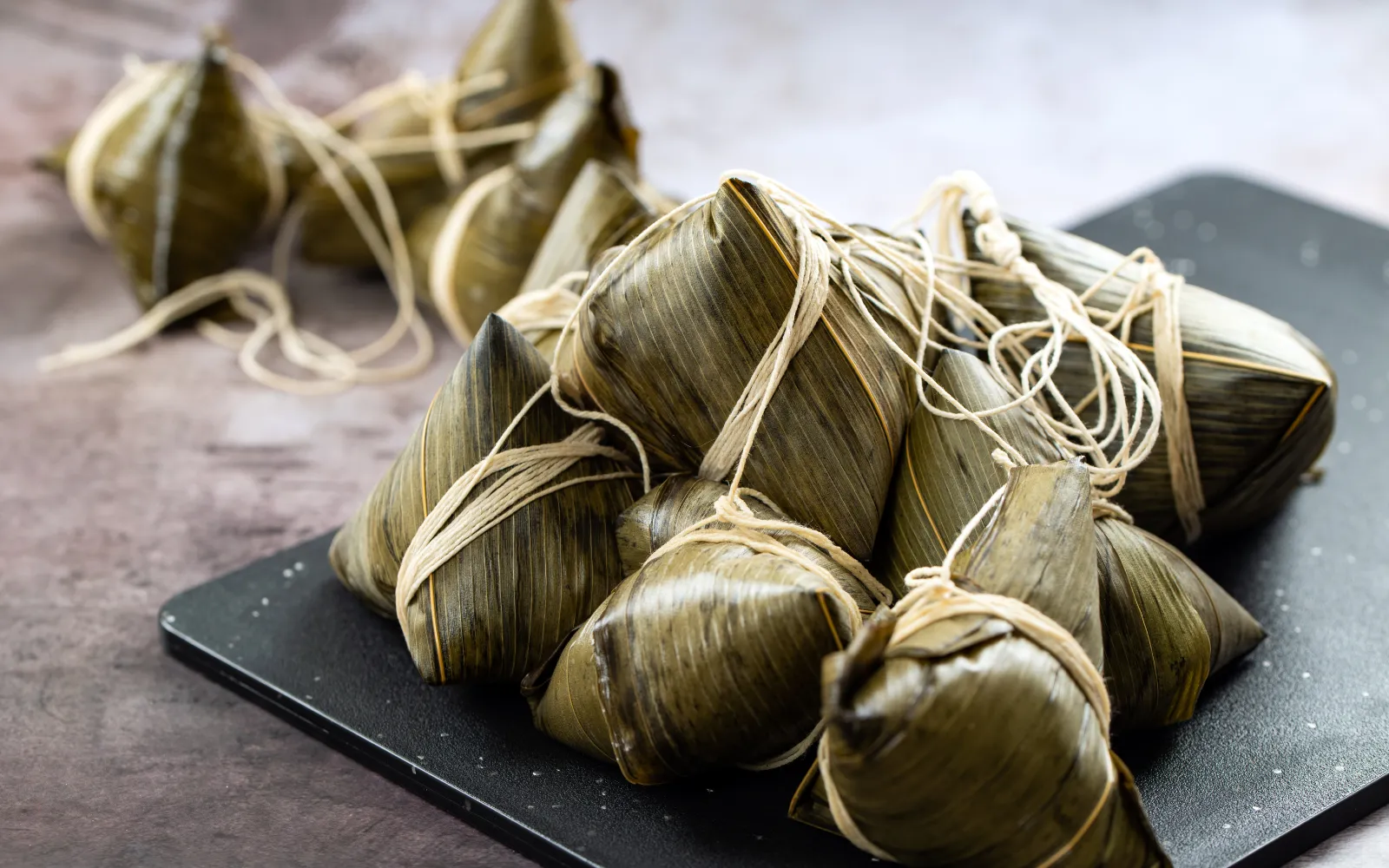Tết Đoan Ngọ, a traditional Vietnamese festival rich in cultural identity, is not only a time for family reunions and ancestral remembrance but also an occasion to savor unique dishes that embody the flavors of home. Among the myriad delicacies of Tết Đoan Ngọ, ash dumplings, or bánh ú tro, stand out as an indispensable treat, a symbol of culinary refinement carrying profound cultural and spiritual values. More than just food, bánh ú tro are an integral part of Tết Đoan Ngọ’s soul, a thread connecting the past, present, and future, and a source of pride in Vietnamese culinary heritage.
Diverse Origins and Names of Ash Dumplings
Bánh ú tro, a rustic yet elegant dish, encapsulates a rich tapestry of cultural stories in its name and form. While known by various names such as bánh gio, bánh nẳng, bánh lá tro, bánh năng, bánh coóc mò, pẳng tấu, “bánh tro” or “bánh gio” remain the most familiar and widespread, deeply ingrained in the consciousness of Vietnamese people across the country. This diversity in names reflects the richness of regional culinary cultures, with each locality having its own variations and terms for this traditional cake.

Regarding its origins, bánh ú tro bears the mark of culinary cultural exchange, sharing similarities with zongzi from Chinese cuisine, particularly in the Guangdong region. Lý Thời Trân’s “Bản thảo cương mục” (Compendium of Materia Medica) also mentioned a similar cake called “bánh thành tống,” wrapped in bamboo leaves with angular shapes. In Chinese culture, ash dumplings also appear during the Dragon Boat Festival (5th day of the 5th lunar month), associated with commemorating Qu Yuan and the dragon boat races. However, Vietnamese bánh ú tro has developed unique variations, deeply rooted in its own identity, becoming an indispensable part of Vietnamese culinary culture.
Ash Dumplings in the Tết Đoan Ngọ Feast: Cultural and Spiritual Significance
In the traditional Tết Đoan Ngọ feast of Vietnamese people, alongside the fresh fruit platter and fragrant glutinous rice wine, the presence of bánh ú tro is essential. This cake is not merely an offering to ancestors, expressing reverence, but also carries profound cultural and spiritual meanings. Bánh ú tro is considered a symbol of purification, helping to “kill insects” in the body, dispel inauspicious energies, and bring peace and health to people.

According to folk beliefs, the weather transitions during Tết Đoan Ngọ, with the rising of dương khí (positive energy), making people susceptible to illness. Eating bánh ú tro, along with sour fruits and glutinous rice wine, is seen as a way to “kill insects,” eliminating potential pathogens within the body, helping people stay healthy and avoid illness throughout the year. Bánh ú tro has become an indispensable part of the ritual, a beautiful traditional cultural feature preserved and passed down through generations.
Pure Vietnamese Ingredients Creating the Distinctive Flavor of Ash Dumplings
Bánh ú tro captivates the taste buds with its delicate, refined flavor, created from simple, familiar, and quintessentially Vietnamese ingredients. The main ingredients for making bánh ú tro are glutinous rice, ash water, and various types of leaves for wrapping. Glutinous rice is carefully selected, usually fragrant varieties like nếp cái hoa vàng or nếp ngỗng, with large, round, plump, and fragrant grains. Ash water, the soul of the cake, is made from the ash of burnt herbs, giving the cake its characteristic color and flavor.

Traditional bánh ú tro are typically unfilled, featuring only a translucent, jewel-like cake layer, eaten with molasses, honey, or white sugar. Later, to cater to diverse palates, bánh ú tro evolved with fillings of mung beans or shredded coconut, adding richness and appeal to the cake. Wrapping leaves also vary by region, including bamboo leaves, banana leaves, dong leaves, or đót leaves, each imparting a unique flavor and shape to the cake. Binding strings are usually made from dried banana sheaths or thinly split giang fibers, all natural, purely Vietnamese ingredients, creating a rustic yet refined dish.
“Magical” Ash Water: The Secret to Unique Ash Dumplings
The key factor creating the distinctiveness and uniqueness of bánh ú tro is ash water, also known as nước nẳng. Ash water not only imparts a beautiful amber color to the cake but also provides a characteristic, refreshing flavor and helps the cake achieve a soft, translucent texture. To make quality ash water, cake makers must go through a meticulous and elaborate process, from selecting materials to burn into ash to preparing the ash water mixture.

Traditionally, ash water is made from the ash of various herbs and precious medicinal plants, giving it a natural aroma and a uniquely refreshing taste. Each region and family has its own secrets in creating ash water, from choosing the type of wood for burning ash (plum wood, betel leaves, banana peels, melastoma leaves, sterculia lychnophora fruits in Phú Thọ; fresh melia azedarach wood, grapefruit branches, diospyros decandra leaves, ficus microcarpa leaves, parasitic plants in Vĩnh Phúc; rice straw, grapefruit peel, areca nut sheaths, sesame fruits, bamboo shoots in Hà Nội…) to the ratio of ash water and lime. “Authentic” ash water for bánh ú tro not only makes the cake delicious but also helps it last longer, without turning sour or spoiling quickly like cakes made with industrial ash water.
In the past, Hải Thượng Lãn Ông Lê Hữu Trác, a renowned physician, also recorded the secret to making nước nẳng in “Nữ công thắng lãm” (Admirable Female Handiwork), using various herbs, fruit peels, and fragrant leaves to burn into ash, creating a special ash water that is both delicious and healthy. Family secrets for making ash water have been preserved and passed down through generations, creating unique flavors of bánh ú tro, deeply imbued with the cultural identity of each region.
Triangular Shape and the Deep Philosophy of Five Elements Hidden in Ash Dumplings
Bánh ú tro during Tết Đoan Ngọ is not only special in flavor but also in shape. The cake can be wrapped in various shapes such as long cylinders or squares, but the most common and meaningful is the triangular shape. The triangular shape of bánh ú tro is not merely an external form but also embodies profound philosophies about the five elements and yin-yang in Asian culture.

According to the five elements theory, the triangle shape belongs to the Fire element, symbolizing the strongest yang energy of the year, especially during Tết Đoan Ngọ, when dương khí (positive energy) is at its peak. Triangular bánh ú tro are seen as symbols of strength, growth, and the ability to ward off evil spirits, bringing good luck and peace. The ingredients of bánh ú tro also represent the harmony of the five elements: ash (Earth), green leaves (Wood), white rice (Metal), water (Water), and the cooking process with fire (Fire). The harmonious combination of the five elements in bánh ú tro expresses the desire for balance and harmony in life, between humans and nature.
The characteristic amber color of bánh ú tro also carries deep meaning, representing the color of earth (Earth), symbolizing fertility, growth, and nurturing all things. Bánh ú tro is not just a delicious dish but also the crystallization of the essence of heaven and earth, a unique symbol of Vietnamese culinary culture.
Enjoying Tết Đoan Ngọ Ash Dumplings the Right Way
Bánh ú tro are best enjoyed cold, the refreshing taste of the cake blending with the mild sweetness of molasses, honey, or white sugar, creating an unforgettable flavor. During the sweltering Tết Đoan Ngọ days, bánh ú tro becomes a perfect cooling treat, both delicious and healthy. The mild, bland taste of the cake and its easy digestibility make it suitable for all ages, from the elderly to young children, especially beneficial for digestion during hot summer days.

Depending on taste and preference, people can enjoy bánh ú tro in various ways. In some regions, bánh ú tro are also eaten with palm sugar, coconut milk, or simply granulated white sugar. Regardless of how they are enjoyed, bánh ú tro retain their characteristic, delicate flavor, making them an indispensable dish during Tết Đoan Ngọ for Vietnamese people.
Conclusion:
Bánh ú tro, an indispensable specialty of Tết Đoan Ngọ, is not only a delicious dish but also a valuable part of Vietnam’s culinary heritage. From its diverse origins and names, pure Vietnamese ingredients, unique ash water making secret, triangular shape carrying deep five-element philosophy, to its refreshing and refined flavor, bánh ú tro has affirmed its special position in the hearts of Vietnamese people. Enjoying bánh ú tro on Tết Đoan Ngọ is not just a culinary experience but also a way for us to connect with the traditions, culture, and spirituality of our nation, cherishing the beautiful values that our ancestors have left behind.